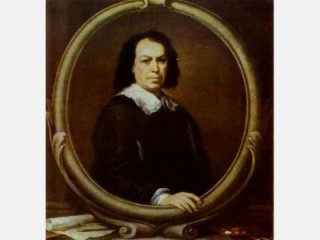
Bartolomé Esteban Murillo biography
Date of birth : 1617-12-31
Date of death : 1682-04-03
Birthplace : Seville, Spain
Nationality : Spanish
Category : Famous Figures
Last modified : 2011-01-13
Credited as : Baroque painter, ,
Bartolome Esteban Murillo (1617-1682) was a Spanish painter whose baroque style was adulated for close to 200 years, condemned for almost 100, and, since the 1950s, has been reevaluated with hedging enthusiasm.
Bartolome Esteban Murillo was born and died in Seville; he led an uneventful life of professional activity and success within the context of personal goodness and contentment. G. Kubler and M. Soria (1959) call him the "Fra Angelico of Spanish painting." The difficulty is that the primitivism of Fra Angelico's art allows the sweetness of his artistic expressions an autonomous existence beyond the pale of human experience, whereas the realism of Murillo's art causes the same gentleness to mock the psychic torment and spiritual alienation of present-day humanity.
If Murillo had conceived his saints of the Old and New Testaments as heroic, their excellence of soul would be more palatable today, but he presented them as middleclass benefactors who perform their acts as though they were commonplaces and look like God-oriented, good men: Moses' Miracle of the Waters (1670-1674) and St. Thomas of Villanueva Giving Alms to the Poor (1668). Murillo's sacroprofanity, or failure to separate the sacred from the merely human, was as natural as breathing to him and as unquestionably sincere.
Murillo was born of well-to-do parents, Gaspar Esteban, a barber-surgeon, and Maria Murillo, and was baptized on Jan. 1, 1618. Orphaned at 11, he became the ward of an uncle who placed him a year later as an apprentice to another relative, the painter Juan del Castillo. The allegation that Murillo visited Madrid and studied with Diego Velazquez is most probably false. At 17 Murillo was working independently, painting small, religious compositions for the Latin American market.
In 1645 Murillo married Beatriz de Cabrera y Sotomayor; in the same year he achieved fame owing to his series of 11 paintings for the Franciscan monastery in Seville. Of his nine children, five entered religious life. He founded an art academy in 1660 and served as its first president. He became enrolled in the Brotherhood of Charity in 1665. Murillo sustained mortal injuries when he fell from a scaffold in the Capuchin church of Cadiz in 1681; he died on April 3, 1682, in Seville.
Murillo's Self-portrait (ca. 1678; National Gallery, London) is an excellent example to justify why recent reevaluation of his art stresses his portraiture. In addition, his masterly handling of landscape is cited as most praiseworthy. The fact is that the life and art of Murillo are in desperate need of research. Apparently the adverse judgments made so sweepingly against his art have intimidated scholarship. Since he rarely signed or dated his works, much of the chronology must be reviewed. Jusepe de Ribera, Alonso Cano, Peter Paul Rubens, Anthony Van Dyck, Correggio, and the Venetian school, particularly Titian, are cited as his influences, but too seldom is it known exactly which originals, copies, or prints Murillo saw. Arbitrary assignations of anonymous works have caused his rightful fame to suffer from the inferiority of his disciples and other imitators. Finally, the proved stylistic range and thematic variety of his art compound the difficulties of scholarly analysis: The Family (ca. 1660), Grape and Melon Eaters, St. Leander (1655), the Santiago Madonna (ca. 1670-1675), the Leningrad Immaculate Conception, and the Miracle of the Loaves and Fishes.
If the art of El Greco may be cited as the supreme expression of Spain's anguish during the Reformation, Murillo's art is undoubtedly the major manifestation of his country's best Counter Reformational response: a way of life in a Franciscan sacroprofanity and fragrance.
Although Murillo had disciples, they did not assist him in executing his works. It seems clear he preferred to be solely responsible for his commissions.
Two sources in English on Murillo's art are recommended because they represent divergent, scholarly points of view: George Kubler and Martin Soria in Art and Architecture in Spain and Portugal and Their American Dominions, 1500-1800 (1959) claim for Murillo accurate and facile draftsmanship, harmony of composition, and unity of conception and execution; Juan Antonio Gaya Nuño in the article on Murillo in the Encyclopedia of World Art, vol. 10 (1965), suggests poor drawing, awkward composition, and a dichotomy between form and content. A highly respected third source is C. B. Curtis, Velázquez and Murillo (1883).
















